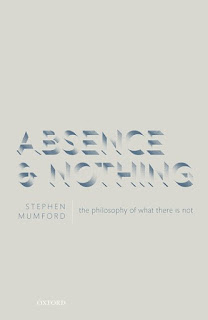 Philosophy, Head of the School of Humanities, and Dean of the Faculty of Arts. He has written many papers and books in metaphysics, including a number of more popular works intended for a non-specialist audience including articles in Times Higher Education magazine, encyclopaedias, and magazines. His most famous book is Dispositions (1998) but he also authored Laws in Nature ( 2004), Getting Causes from Powers (with Rani Lill Anjum, 2011) and Watching Sport: Aesthetics, Ethics and Emotions (2011).
Philosophy, Head of the School of Humanities, and Dean of the Faculty of Arts. He has written many papers and books in metaphysics, including a number of more popular works intended for a non-specialist audience including articles in Times Higher Education magazine, encyclopaedias, and magazines. His most famous book is Dispositions (1998) but he also authored Laws in Nature ( 2004), Getting Causes from Powers (with Rani Lill Anjum, 2011) and Watching Sport: Aesthetics, Ethics and Emotions (2011).
Mumford applied the “Page 99 Test” to his newest book, Absence and Nothing: The Philosophy of What There is Not, and reported the following:
Page 99 falls near the end of a chapter on mere possibilities. The issue is whether mere possibilities have any being or reality at all. Mere possibilities are the possibilities that are not also actualities, which need to be distinguished from the possibilities that are also actual. There’s no philosophical problem about the latter being real. A queue could delay you, for instance, but it seems that a merely possible queue couldn’t. The discussion is winding up, by page 99, with a discussion of fictionalism regarding mere possibilities. Treating mere possibilities as fictions allows us to maintain that they have no reality as such, though there are still constraints on what makes something a credible fiction.Learn more about Absence and Nothing at the Oxford University Press website.
The Page 99 Test works to an extent in the case of Absence and Nothing. It certainly gives a flavour of what the book is about. The style and philosophical methods should be, and I think are, consistently applied across the whole text. But the book also deals with a number of distinct issues, such as causation by absence, perception by absence, holes, shadows, negative truth and negative properties. Dipping into the book will give you only one of those. What unites them is that, with each, at least some philosopher has been tempted to treat nothing as if it is something. The book takes Parmenides’ view that nothing is not and sees how far we can explain some of these long-standing philosophical conundrums without reifying nothingness. Mere possibilities are one such problem. Can we treat them as really nothing? David Lewis famously gives them reality: though reality in other possible worlds. Even that should be a step too far for a Parmenidean.
I’m a metaphysician and Absence and Nothing contains plenty of metaphysics. Metaphysicians occasionally invoke a distinction between homoeomerous and heteromerous. Homoeomerous means having similar parts, like the parts of gold are all the same: all golden. Heteromerous means having varied parts, like the parts of a face, which differ from each other. The Page 99 test would be fair if books were homoeomerous, since page 99 would be like any other in the same book. But the book would be very boring if it was about exactly the same thing the whole way through. Books are interesting because they are heteromerous. When I write a book, I want each few pages to move the discussion on, introduce new topics and questions, and to show a development and logical progression throughout the whole. It’s possible, then, that page 99 might be a bit better or worse than others, or that it discusses a topic that is unrepresentative of the whole, but that might be what makes it a good book.
--Marshal Zeringue



